![]() Please feel free to send any antique bottle or glass questions to ferdinand@peachridgeglass.com. The information will be posted if relevant or of interest to the readers. I will try to answer or wait for another reader to respond. Quality images are very important. Thanks! If you want to see previous questions,go to “Mailbox Letters” in “Categories” on the right column of each page.
Please feel free to send any antique bottle or glass questions to ferdinand@peachridgeglass.com. The information will be posted if relevant or of interest to the readers. I will try to answer or wait for another reader to respond. Quality images are very important. Thanks! If you want to see previous questions,go to “Mailbox Letters” in “Categories” on the right column of each page.
Mailbox Letters | 2016
What is this…?
Can you help me to identify this, please? It measures 6 inches long and 4.25 around at the widest. There is a seam around the middle, It is blown and has a pontil scar on one end. Any ideas? Or any idea who could help me? – Kayla
[PRG] Because it is closed on both ends, the clue lies there. It was meant to float and was used as decoration on a fishing net. Usually there would be a whole series of floats. Here is a neat picture of some rare Japanese “Roller Pin” net floats from Tim Walters.
Schroders Bitters Sample
Hi, I am writing to you for information on a sample size Schroders’s Bitters, Louisville , KY. No base embossing, stepped shoulder. The bottle measures 5 1/4″ high x 1 1/2″ wide. There is some damage, chips and a crack in the lip and a 1 1/4″ crack in the main body that goes through the first S in Schroder’s.
The bottle was found in west Texas, exact location undisclosed, and looked sand blasted when I received it. I had Rick Lease clean the bottle as best as he could vastly improving the condition and appearance but it is still highly pitted. I have found reference to smaller sample size Schroder’s Bitters, 4″ x 1″ but nothing on this size bottle. I don’t have a camera so I cannot forward any pictures. Any assistance you can offer will be appreciated.
Thank You
Randall Van Wagenen
[PRG] Randall: This looks to be the very rare S 63 listed in Bitters Bottles. 5 1/4 x 1 1/2. I have an example in my collection. Is this the one you have? I assume you spelled Schroeder’s wrong in your email. If it really says Schroder’s, that’s another story.
My boyfriend uncovered this bottle today at work while digging. I haven’t cleaned it up yet but have been searching the Internet to try and find info on it. It is not the standard size mentioned everywhere but appears to be a miniature version instead. The height is only 3 3/4″. Can you tell me any more about it or what its value would be? Any info you can give would be greatly appreciated! I love antiques and am very curious to find out more:) Thank you in advance.
Mandy
[PRG] Maybe $500 to $1,000 in perfect stellar condition like mine below. This is a salesman’s sample.
I have a large demijohn that needs a good home.
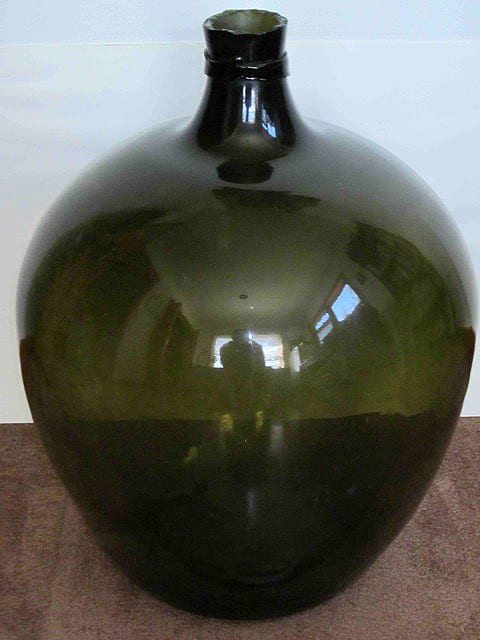 Hello Mr Meyer, I have a large demijohn that needs a good home. It has been in my possession since 1952, and looks to be made 1870-1900 or possibly earlier. It is free blown with no pontil mark, with a dimpled bottom so it stands on it’s own. The neck is 3” outside diameter and has an applied band embossed with { .W. 60L } upside down. I suppose that it could stand for 60 liters, that would be 15.8 gallons, my guess was that it held 12-14 gallons so 60 liters might be correct. Rough measurements are 18” largest diameter X 24” high. Would you know of anyone (possibly nearby Washington State) that collects carboys & demijohns, and could you have them contact me? Regards,
Hello Mr Meyer, I have a large demijohn that needs a good home. It has been in my possession since 1952, and looks to be made 1870-1900 or possibly earlier. It is free blown with no pontil mark, with a dimpled bottom so it stands on it’s own. The neck is 3” outside diameter and has an applied band embossed with { .W. 60L } upside down. I suppose that it could stand for 60 liters, that would be 15.8 gallons, my guess was that it held 12-14 gallons so 60 liters might be correct. Rough measurements are 18” largest diameter X 24” high. Would you know of anyone (possibly nearby Washington State) that collects carboys & demijohns, and could you have them contact me? Regards,
Douglas Moody
PO Box 1107
Eastsound, Washington, 98245
Clarke or Clark?
Hi Ferdinand, Your collection of Clarke’s bitter bottles is amazing! My husband’s family are direct descendants of Dr. Clarke of Sharon, Massachusetts. Dr. Clarke is third great-grandfather to my children. “Dr.” Clarke — as he had “no degree from a medical college,” according to the family history — manufactured at one time 36,000 bottles of bitters per month. Family history writes that in an old newspaper article the large number of bottles, ‘will not seem incredible, when we are aware that the doctor’s portrait, which is on each bottle, is as familiar a sight at the trading stations on the West Coast of Africa, in
Honolulu, and the Sandwich Islands as in the country stores of New England.’
Dr. Clarke’s Sherry Wine Bitters ‘acquired a worldwide reputation as a cure for asthma, dyspepsia, and general debility,’ the article also states. A fun family fact of Dr. Clarke is that in the family, the Clarks before him never spelled their name with the final “e.” Dr. Clarke must have liked having that extra “e” for some reason. All direct descendants of
Dr. E. R. Clarke have hung on to that final “e.” My children’s great-grandfather (deceased 2003) shared Dr. Clarke’s name, Edwin Richards. His wife, Mrs. E. R. Clarke, is still living and celebrates her 98th birthday next month. Her name is Elizabeth. She has always been a history buff and told me the story of Dr. Clarke’s patent medicines when I married into the family, even showing me a piece of one of Dr. Clarke’s bottles with his name intact. I thought you would appreciate some information about the man on the bottles you collect.
Holly Warden
Read: A grouping of Clarke’s Vegetable Sherry Wine Bitters
NEED HELP with identification
Hi Ferdinand, I have been a member of FOHBC on and off for years. I have been a bitters collector for 43 years. I guess around twenty years back I acquired a dug and cleaned bottle from a San Francisco collector who claimed this bottle was dug somewhere in SF. I have never been able to identify and need some help. It is a beautiful specimen, 10 1/8″ long, yellow amber to citron in color, straight – no barrel, seven ring on top, seven ring on bottom, label area in the middle. I paid a good price for this bottle, even back then. Also, a two piece mold, pin bottom with an applied top in early 1800’s style. However, due to this type of two piece mold. I estimate the age between 1880 and 1910. I can send some photos later so you can see this piece. Need some help!
PRG: I posted the bottle pics on the PRG Facebook as I had seen the bottle before. It is not an American barrel form. Lou Holis responded with the following information he found on a past ABCR Auction in Australia.

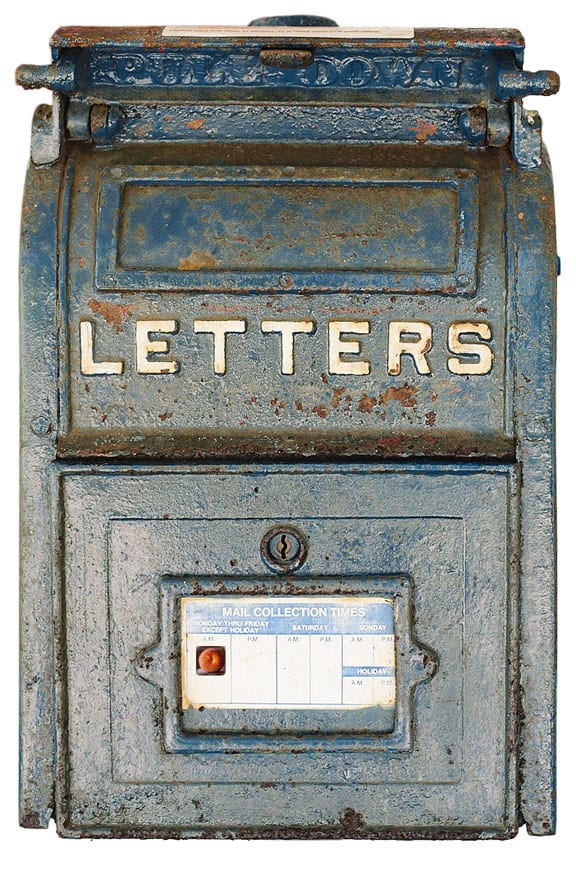
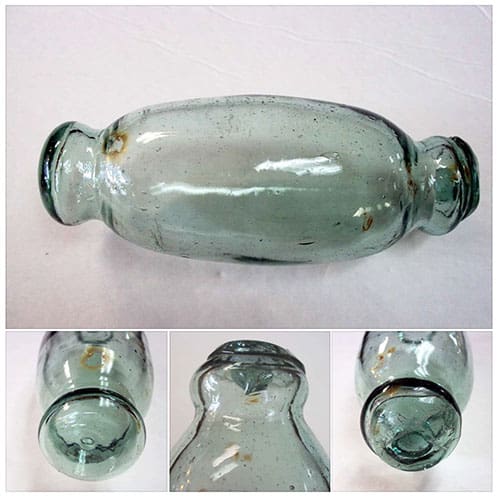
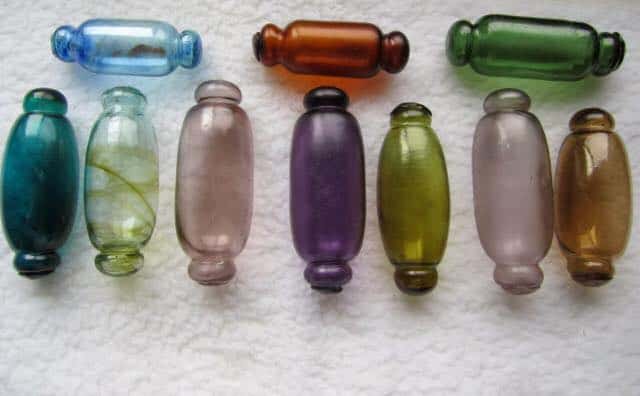
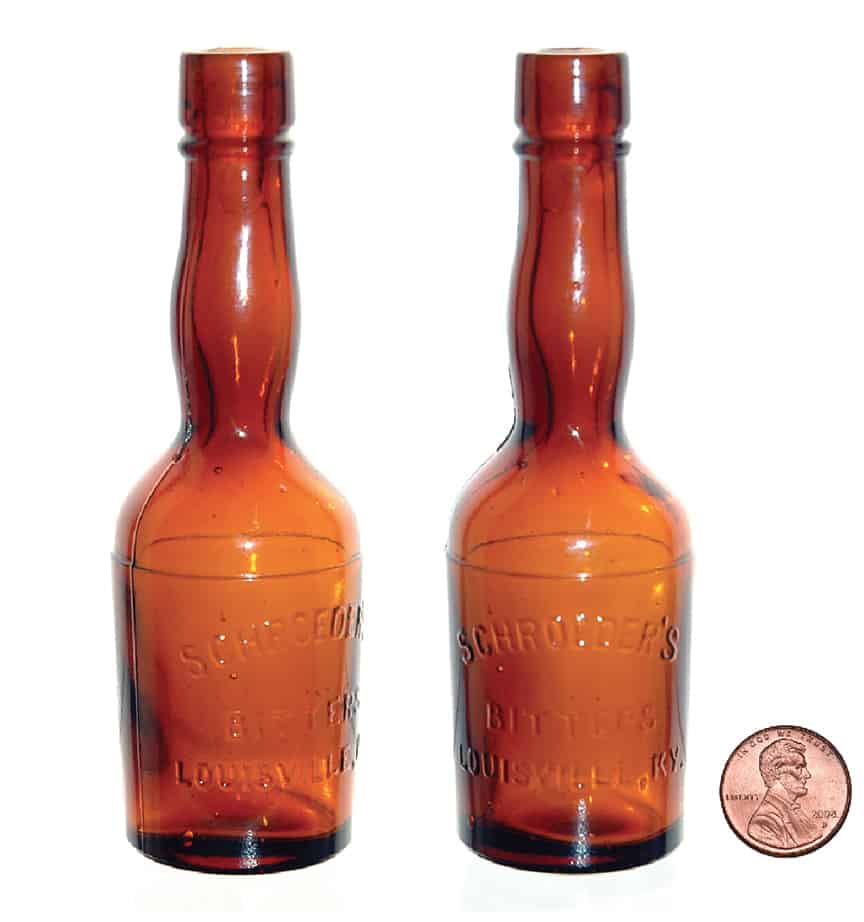
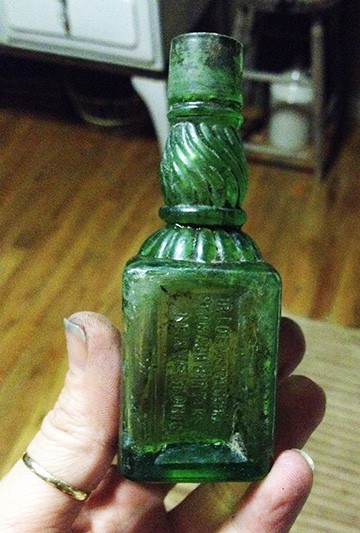
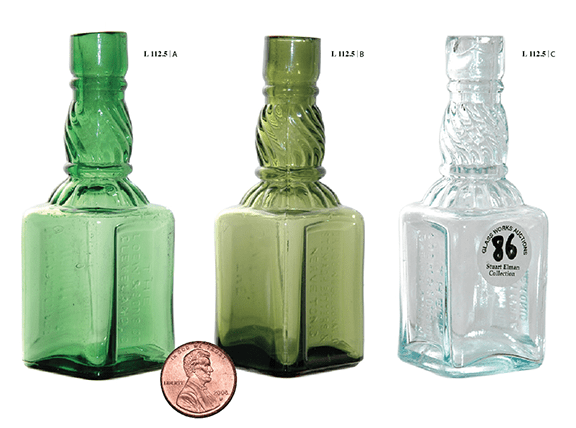
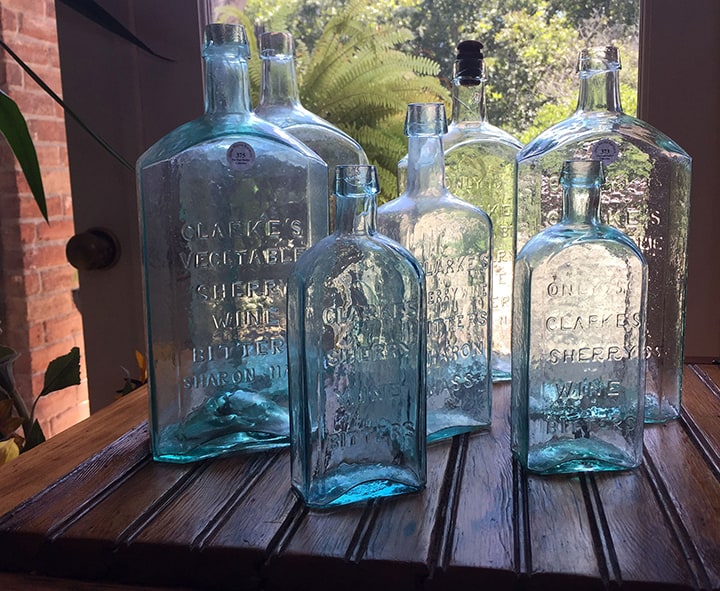
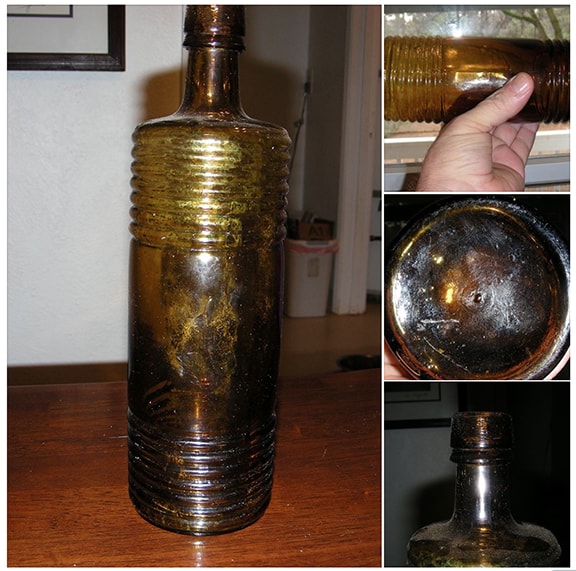
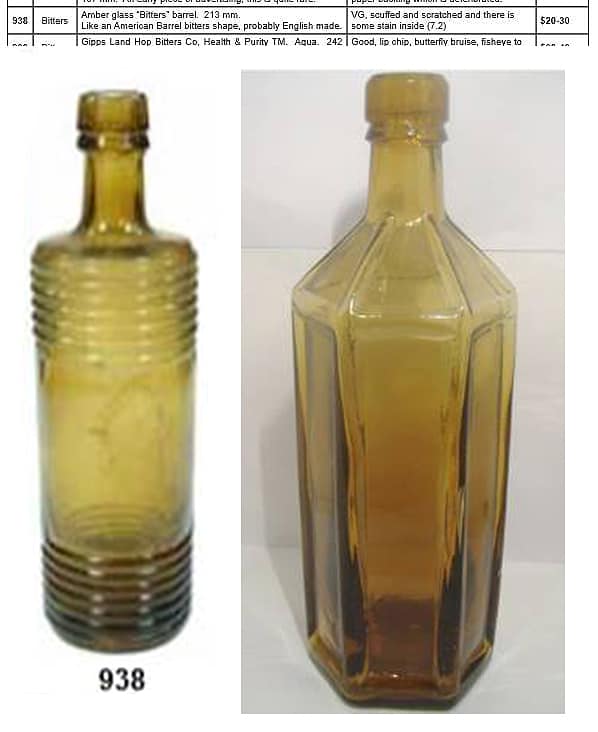






I own an example of this barrel that I purchased years ago at the Las Vegas show from Bob Ferraro. It’s a mint bottle in a very unusual and attractive “gasoline” color. It has an inventory label from the Gardiner Collection (#4081). Bob thought that it might be English and likely was a bitters. I know that John Feldmann also had an example in his collection at one time, and I believe it’s pretty rare since John’s is the only other example I’ve come across.
Best regards,
Mike